
Vegetative/Reproductive
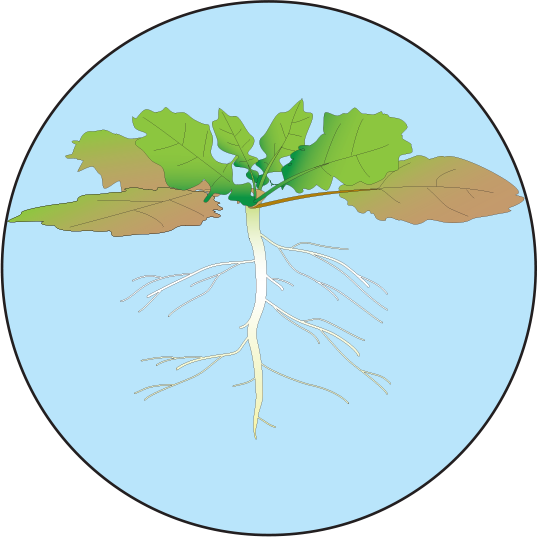
Overwintering
- Growth resumes when average temperatures reach 5°C but will be slow until it is consistently warm.
- Leaves may have rotted off or be discoloured but the centre of the rosette should be green.
Determine the population of healthy plants.
- 5 plants/ft2 or more is ideal.
- 3-4 plants/ft2 is acceptable.
- 1-2 plants/ft2 can be worth keeping if plants are healthy and evenly spaced, but yield potential may be reduced.
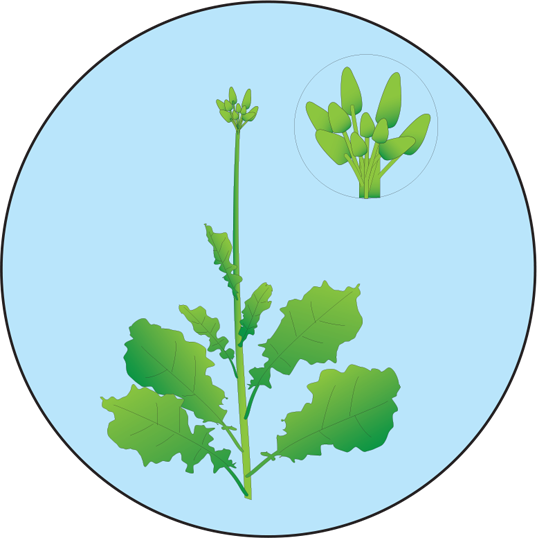
Stem elongation
Stem elongation (bolting) begins with leaf expansion and the initiation of flower buds in the whorl of the rosette.
- The plant is moderately tolerant to hard freezes at this stage.
- Nutrient demand increases significantly at bolting.
- Apply fertilizer before elongation.
Spring fertilizer application
Apply fertilizer after some growth has been observed, plant health and population have been assessed, and prior to stem elongation. If fertilizer can’t be applied before elongation, apply in early elongation stages but before flowering. A yield of 70 bu/acre is a reasonable target for healthy stands of winter canola.
- Canola requires 3-3.5 lb of nitrogen per bushel of grain. Generally, 30-40 lb/acre of actual nitrogen pre-plant and 120-150 lb/acre of actual nitrogen in spring is recommended.
- Canola has a higher sulphur requirement than wheat. In general, apply 20-30lb/acre of sulphate with about half applied pre-plant. Sulphur deficiency can be corrected up to early flowering.
- When plants are frozen or after the canola has elongated, it can be damaged by equipment tires. Use narrow tires and a wide boom if possible, and avoid driving through the field while plants are frosted.
- Both liquid and granular fertilizer are safe to apply.
Plant health
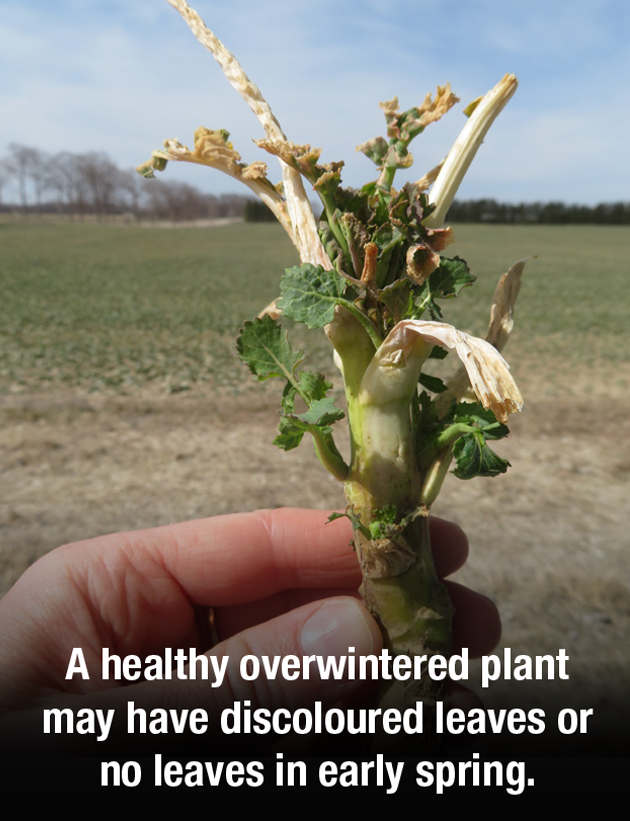

Assess plant health after plants green up and begin growing.
- Living plants will be green at the growing point.
- Dead plants will rot over time and are easily pulled away from the soil.
- Cut plant crowns at the soil surface to assess health of the stem vascular tissue – it should be white to green. Hollow stems or brown tissue can indicate low yield potential.
- A strong smell may indicate rotting plants – dig up plants to check for rotten root tips, which lowers yield potential.
- Heaved plants with exposed roots have lower yield potential.
- If it is difficult to determine whether plants are healthy or not, wait a week for more growth and check again.
Frost
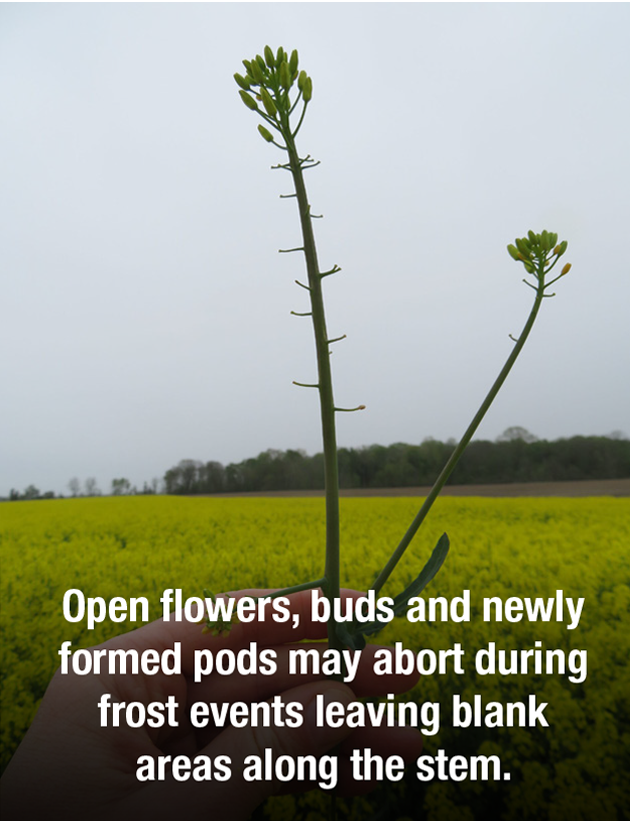
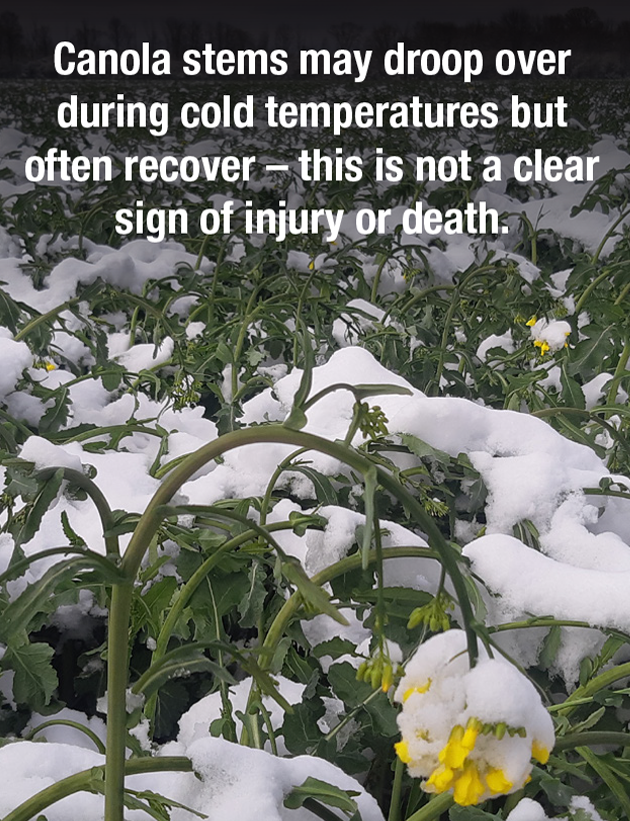
Frost events during elongation will cause plants to droop over and may cause cracked stems. Open flowers abort and buds may be injured. Secondary branches can compensate for the loss of some early flowers, minimizing the impact on yield. Injury is typically minor with brief periods at -3 to -4°C but increases with lower temperatures and longer cold periods.
For more information contact meghan.moran@ontario.ca
Illustrations and reference information provided by Michael J. Stamm and Ignacio A. Ciampitti, Canola Growth and Development, Kansas State University, July 2017.